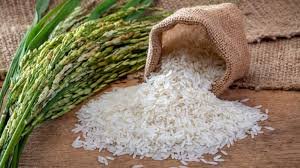Pakistan’s Rice Exports: A Rising Tide in FY25
In an impressive display of agricultural prowess, a remarkable surge in Pakistan’s Rice Exports, achieving an increase of 98.58% during the first two months of the financial year 2025 (FY25). This surge not only reflects an upswing in the quantity of rice exported but also illustrates significant financial gains for the country.
The export figures from July to August 2024 reveal that Pakistan exported over 340,703 metric tons of rice, with a total value reaching $464.667 million. This stark contrast to the same period in the previous year—where the same quantity of rice was valued at just $233.992 million—highlights a transformative moment for Pakistan’s rice industry.
The Stellar Performance of Basmati Rice
A significant portion of this growth can be attributed to the performance of basmati rice, which has long been regarded as one of Pakistan’s most valuable agricultural exports. Basmati rice exports surged by an astounding 103.63%, with the country exporting 187,016 metric tons worth $192.610 million. This increase is in stark contrast to the previous year, when only 79,180 metric tons were exported, generating $94.590 million.
This remarkable growth in basmati rice exports can be ascribed to several key factors. Firstly, there has been an increasing global demand for high-quality basmati rice due to its unique aroma, flavor, and nutritional benefits. Secondly, improved agricultural practices and technological advancements have enabled Pakistani farmers to enhance the quality and yield of their crops, making them more competitive in the international market.
Diverse Rice Varieties Fueling Growth
In addition to the impressive performance of basmati rice, other rice varieties have also contributed significantly to the overall export growth. During the first two months of FY25, Pakistan earned approximately $272.057 million by exporting around 430,045 metric tons of other rice varieties. This is a marked increase from the $135.402 million earned during the same period last year.
The diversification of rice varieties exported is a testament to the evolving agricultural landscape in Pakistan. By catering to various market segments, Pakistani exporters are able to tap into different consumer preferences and expand their market reach. This strategic approach not only boosts export revenues but also enhances the resilience of the agricultural sector against global market fluctuations.
Declining Food Imports: A Positive Indicator
Interestingly, while rice exports have soared, the food group imports into Pakistan have experienced a notable decline of 18.15% during the same period. From July to August 2024, the total value of food imports fell to $1.066 billion, down from $1.303 billion in the previous year. This trend can be viewed as a positive sign of Pakistan’s growing self-sufficiency in food production, particularly in staple crops like rice.
This decline in food imports may be indicative of the effectiveness of government policies aimed at bolstering domestic agriculture. As Pakistan continues to enhance its agricultural output, the nation is poised to reduce its reliance on imported food products, thereby fostering economic stability.
Food Group Exports: A Growing Trend
Complementing the surge in rice exports, Pakistan’s overall food group exports have shown remarkable growth, increasing by 42.39% during the same period. From July to August 2024, the country exported food commodities valued at $1.011 billion, compared to $710.651 million in the previous year. This upward trend underscores the resilience and competitiveness of Pakistan’s agricultural sector.
The robust growth in food exports suggests that Pakistan’s rice exports are adapting to market demands and leveraging their strengths to capture a larger share of the global market. This not only benefits the economy but also enhances food security for the nation.
Strategic Implications for the Future
To sustain this impressive growth trajectory in Pakistan’s rice exports, it is essential for Pakistan to implement strategic measures that enhance productivity and competitiveness. Investing in modern agricultural techniques, research and development, and quality control will be crucial for maintaining high standards in rice production.
Furthermore, exporters should focus on building strong brand identities for Pakistani rice in international markets. By emphasizing the unique qualities of basmati and other rice varieties, Pakistani exporters can differentiate their products and appeal to health-conscious consumers around the globe.
Conclusion
In summary, Pakistan’s rice exports have experienced a remarkable surge in FY25, reflecting a bright future for the agricultural sector. The impressive growth of nearly 100% is driven by strong demand for basmati rice and the diversification of other rice varieties.
As the country capitalizes on this momentum, it is essential to continue fostering collaboration among stakeholders in the agricultural sector. By prioritizing innovation, quality, and strategic marketing, Pakistan can solidify its position as a leading exporter of rice on the global stage.
With the decline in food imports and the simultaneous rise in food exports, Pakistan is not only moving toward self-sufficiency but also paving the way for sustained economic growth. As the nation navigates the complexities of the global agricultural landscape, the rice sector will undoubtedly play a pivotal role in shaping Pakistan’s economic future.



